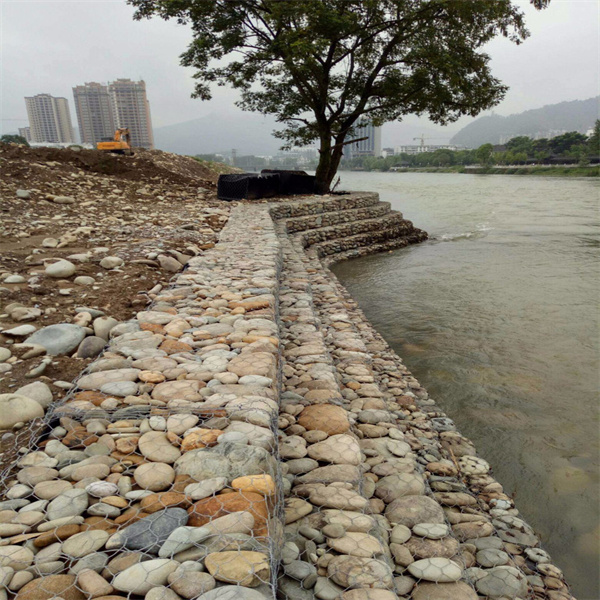ធ្នូ . 24, 2024 20:22 Back to list
Exploring the Benefits and Uses of Gabion Coils in Modern Landscaping
The Versatility and Utility of Gabion Coils
Gabion coils, a remarkable innovation in the realm of landscaping and civil engineering, represent a blend of functionality, durability, and aesthetic appeal. These cylindrical structures, made from strong, coated wire mesh, are filled with stones or other suitable materials and are predominantly used for various applications, including retaining walls, erosion control, and decorative landscaping. Their design and application have made them increasingly popular among professionals and DIY enthusiasts alike.
Understanding Gabion Coils
At its core, a gabion coil is a flexible containment system that can be used in various environments. Unlike traditional rigid gabion boxes, which are fixed in shape, gabion coils can be shaped and arranged to meet specific project needs. This characteristic allows for greater versatility in construction and landscaping.
Gabion coils are typically available in different sizes, making them appropriate for various scales of projects. The coils are generally made from high-quality steel wire, often galvanized or coated with PVC to provide a higher resistance to corrosion. This added durability ensures that they can withstand harsh weather conditions, making them suitable for both urban and rural applications.
Applications of Gabion Coils
1. Erosion Control One of the primary uses of gabion coils is in erosion control. By strategically placing these coils along riverbanks or slopes, they can stabilize soil and prevent washouts. As water flows over the coils, the rocks within them create a barrier that diffuses the force of the water, reducing soil erosion significantly.
2. Retaining Walls Gabion coils can be utilized to construct retaining walls that provide necessary support to bulk earth. These walls are not only functional but also blend well into the natural landscape due to the use of natural stone or other fill materials. This makes them a preferred choice over more traditional concrete walls.
3. Noise Barriers In urban settings, gabion coils can serve as noise barriers that mitigate sound pollution. When installed along busy roads or highways, the dense filling of the coils absorbs sound, creating a quieter environment for nearby residents.
gabion coils

4. Aesthetic Landscaping Beyond their functional characteristics, gabion coils add a unique aesthetic element to landscaping projects. By filling them with colorful stones or natural materials, they can create visually appealing features in gardens, parks, and outdoor spaces. They can be used to form seating areas, decorative borders, or even garden beds.
Advantages of Using Gabion Coils
The benefits of gabion coils extend beyond their versatility. Here are some of the advantages that make them a popular choice
- Eco-Friendly Gabion coils can be filled with natural materials, making them an environmentally friendly choice. They also promote biodiversity by providing habitats for small animals and plants.
- Cost-Effective Compared to traditional construction materials, gabion coils can be more cost-effective. Their simple design reduces labor costs, and the materials used can often be sourced locally.
- Sustainability Gabion coils are long-lasting, requiring minimal maintenance and providing a sustainable option for construction and landscaping. Their durability means that they will not need frequent replacement, which can save money and resources over time.
Conclusion
The rise in the popularity of gabion coils reflects a growing trend towards sustainable and versatile construction methods. With their ability to meet practical requirements while enhancing the aesthetic appeal of spaces, gabion coils are a valuable resource for engineers, landscapers, and property owners. As we continue to explore eco-friendly solutions for modern challenges, the use of gabion coils represents a significant step forward in creating functional, beautiful, and environmentally friendly landscapes. Their adaptability to a range of applications, combined with their strength and sustainability, positions them as a vital component in the future of construction and landscaping.
-
HESCO Gabion Baskets for Coastal Erosion Prevention
NewsAug.22,2025
-
Longevity and Durability of River Rock Gabion Walls
NewsAug.22,2025
-
How to Integrate Gabion 3D Walls in Urban Planning
NewsAug.22,2025
-
Reno Mattress Gabion Applications in Civil Engineering
NewsAug.22,2025
-
How to Install Wire Mesh for Gabion Baskets Properly
NewsAug.22,2025
-
Best Materials for Filling a Chain Link Gabion
NewsAug.22,2025
-
Wire Mesh Thickness Impact on Gabion Wall Load Bearing
NewsAug.12,2025






